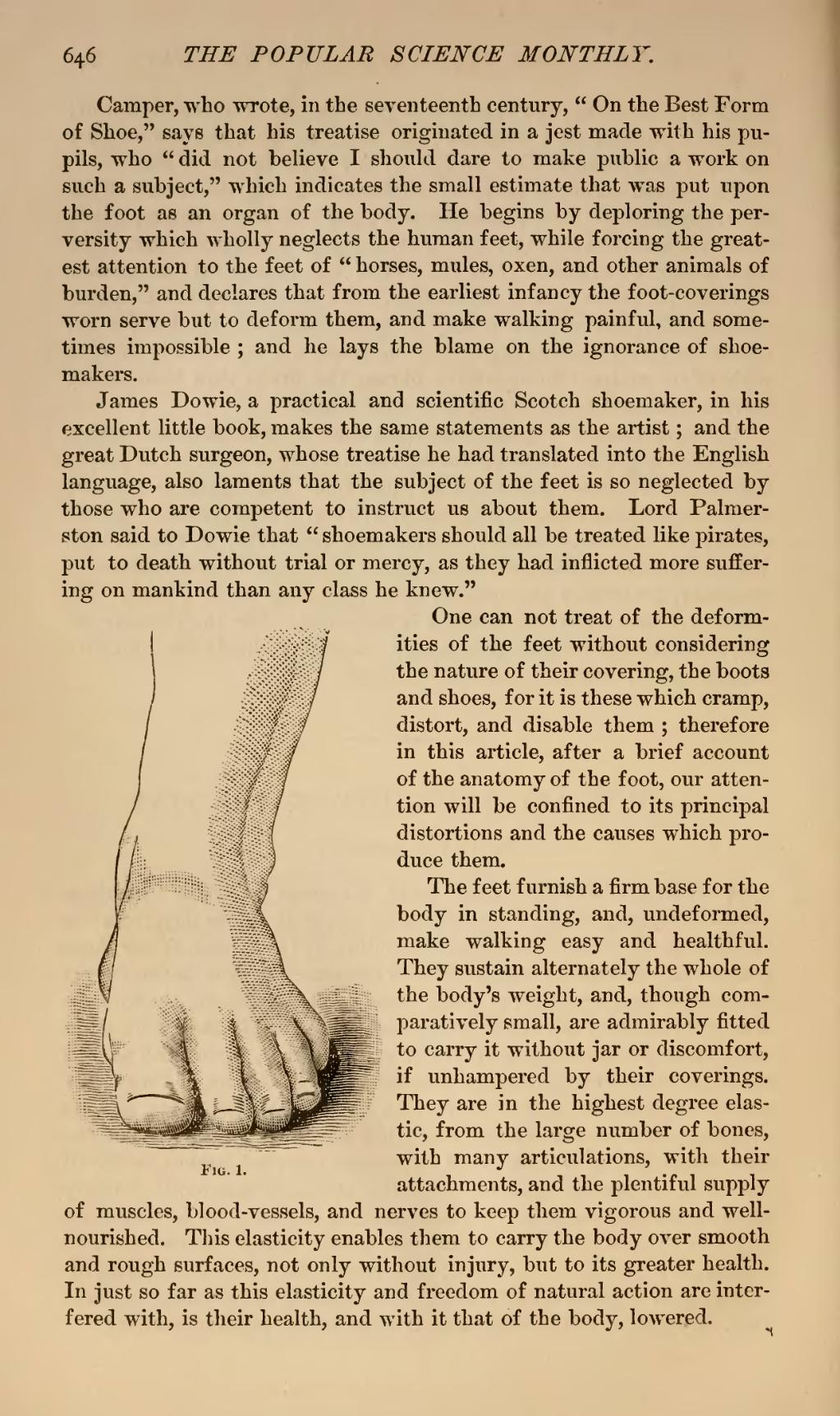Camper, who wrote, in the seventeenth century, "On the Best Form of Shoe," says that his treatise originated in a jest made with his pupils, who "did not believe I should dare to make public a work on such a subject," which indicates the small estimate that was put upon the foot as an organ of the body. He begins by deploring the perversity which wholly neglects the human feet, while forcing the greatest attention to the feet of "horses, mules, oxen, and other animals of burden," and declares that from the earliest infancy the foot-coverings worn serve but to deform them, and make walking painful, and sometimes impossible; and he lays the blame on the ignorance of shoe-makers.
James Dowie, a practical and scientific Scotch shoemaker, in his excellent little book, makes the same statements as the artist; and the great Dutch surgeon, whose treatise he had translated into the English language, also laments that the subject of the feet is so neglected by those who are competent to instruct us about them. Lord Palmerston said to Dowie that "shoemakers should all be treated like pirates, put to death without trial or mercy, as they had inflicted more suffering on mankind than any class he knew."

|
| Fig. 1. |
One can not treat of the deformities of the feet without considering the nature of their covering, the boots and shoes, for it is these which cramp, distort, and disable them; therefore in this article, after a brief account of the anatomy of the foot, our attention will be confined to its principal distortions and the causes which produce them.
The feet furnish a firm base for the body in standing, and, undeformed, make walking easy and healthful. They sustain alternately the whole of the body's weight, and, though comparatively small, are admirably fitted to carry it without jar or discomfort, if unhampered by their coverings. They are in the highest degree elastic, from the large number of bones, with many articulations, with their attachments, and the plentiful supply of muscles, blood-vessels, and nerves to keep them vigorous and well-nourished. This elasticity enables them to carry the body over smooth and rough surfaces, not only without injury, but to its greater health. In just so far as this elasticity and freedom of natural action are interfered with, is their health, and with it that of the body, lowered.
